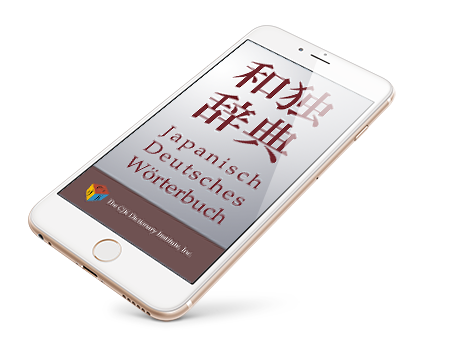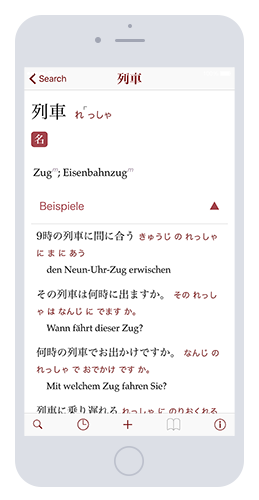
CJKI Japanese-German Comprehensive Dictionary
Download a printable press release (.pdf).
With more than 110,000 headwords, the CJKI Japanese-German Comprehensive Dictionary (WaDoku) is the most comprehensive and most up-to-date Japanese-German dictionary available, containing nearly twice as many entries as the largest comparable printed dictionaries.
For the first time, learners have at their fingertips a wealth of information that is linguistically accurate, easy to use, and carefully adapted to their practical needs. That is, the dictionary offers various features such as romanized input, numerous illustrative examples, detailed grammatical codes for both German and Japanese and various search modes that ensure maximal usefulness to the learner.
FEATURES
- Contains over 110,000 entries and 500,000 translation equivalents.
- Includes over 70,000 example sentences and phrases useful for learners.
- The ability to search example sentences enables learners to find inflected forms and examples that are not directly accessible from the headword, and to study how words and phrases are used in context.
- Search keywords can be input in both Japanese script and roman script (convenient for those users who find it cumbersome to change the iOS keyboard).
- When entering search keywords in kana/kanji, the search results can be filtered to find words ending with the input characters (thus 人will find 人, 二人and スロバキア人).
- Toggle button allows users to choose between displaying kana or romanized readings.
- Pitch accent information showing natural pronunciation.
- Rich grammatical information such as part of speech codes, hints for Japanese conjugation, German grammatical gender, and more.
- Various types of labels give information on etymology, style, function, level of formality, etc., providing practical guidance on the style and usage associated with each sense.
- Orthographic variants of Japanese headwords allow learners to locate entries from any of their variants.
- Cross-references to synonyms and antonyms enable advanced learners to gain a deeper understanding of the headword meanings.
- A reverse index allows Japanese entries to be accessed from their German equivalents.
- No Internet connection required.
- History and bookmarks.
- Clean, easy to use interfaces localized in German, Japanese and English.

ACKNOWLEDGEMENTS
This dictionary is based on the WaDokuJT project, and is distributed in accordance with the conditions set forth in the project license. The WaDokuJT project was started in 1998 by Ulrich Apel at Osaka University. The data hasbeen online since 1999, and the project was presented at a scientific conference in the same year for the first time. Since 2007 a Non Profit Organization WaDoku e.V.” has helped to maintain this and other projects, and is monitoring the quality of the dictionary. Recently, the project is affiliated rather closely with the Department of Japanese Studies at the University of Tubingen. Contributions to the dictionary come mainly from academia, but also from translators, researchers and learners of Japanese.


